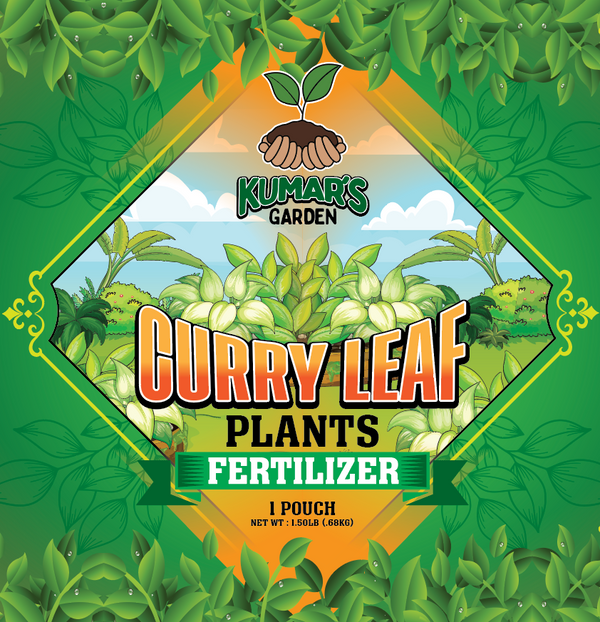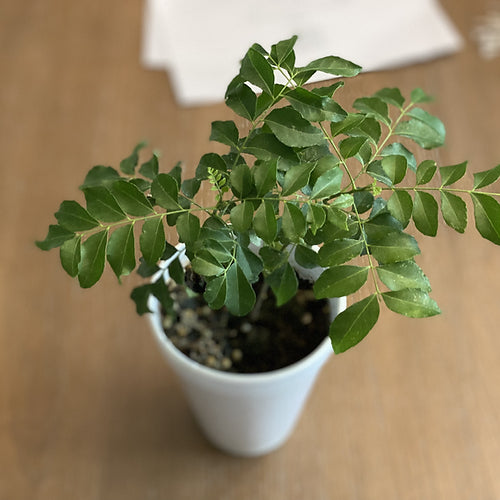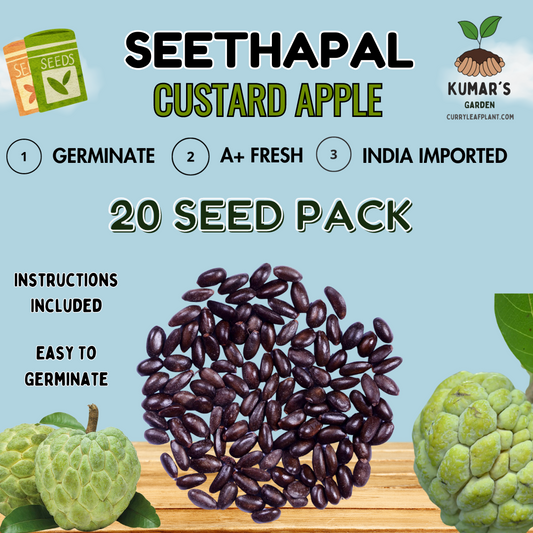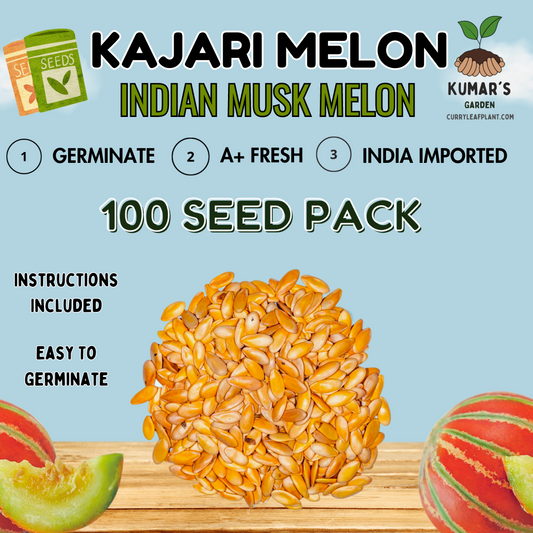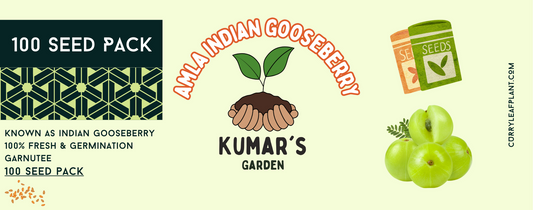Tips for Healthy Curry Leaf Plants
Curry leaves are a staple ingredient in Indian cuisine, used for their distinctive aroma and flavor. But did you know that these leaves also have medicinal properties? If you love using fresh curry leaves in your cooking, it's time to start growing your own curry leaf plant. However, growing healthy curry leaf plants can be a challenge. In this blog post, we will go over everything you need to know about caring for your curry leaf plant. From understanding the plant itself to identifying common issues like yellowing and drooping leaves, and how to detect and deal with pests and diseases. We'll also discuss how to ensure the longevity of your curry leaf plant through regular care. With our tips, you'll be able to grow healthy and thriving curry leaf plants in no time!
Understanding Curry Leaf Plants
Curry leaf plants, also known as Murraya koenigii, are famous for their aromatic leaves that are commonly used in Indian cuisine. These plants can thrive in various climates but require a minimum of 6 hours of direct sunlight. With proper care, they can grow to a height of 10-20 feet and produce beautiful white flowers and small berries. To ensure their well-being, curry leaf plants should be planted in well-drained soil and watered regularly. Pruning is also essential to promote new growth and maintain their desired shape. With enough space and utmost care, these plants can flourish and enhance your gardening experience.
Importance of Curry Leaves in Cooking and Medicine
Curry leaves are widely used in Indian cooking due to their distinctive flavor and aroma. Before adding them to dishes, the leaves are often fried in oil to enhance their taste. Apart from their culinary uses, curry leaves are also known for their medicinal properties. In Ayurvedic medicine, they are valued for their antioxidant and antimicrobial properties. These leaves have been used for centuries to aid digestion and treat various ailments. Incorporating curry leaves into your cooking not only adds a flavorful twist but also provides potential health benefits.
Common Issues with Curry Leaf Plants
Curry leaf plants commonly face issues that impact their growth and health. One common problem is the yellowing and drooping of leaves, which could be due to watering problems, drainage issues, or nutrient deficiencies. Prompt detection and addressing of these issues are crucial for maintaining plant health. Proper care and management can prevent further damage and promote healthy growth. By providing enough sunlight, proper watering, and ensuring nutrient-rich soil, these common issues can be effectively managed.
Yellowing and Drooping Leaves
A common issue faced by curry leaf plants is the yellowing and drooping of leaves. This can be attributed to various factors such as overwatering or underwatering. Insufficient drainage can also result in waterlogged roots and lead to yellow leaves. Additionally, nutrient deficiencies, particularly nitrogen deficiency, can cause the leaves to turn yellow and droop. To address this problem, it is important to regularly monitor the plant's water needs and provide adequate nutrients. By taking utmost care of your curry leaf plant and addressing these issues promptly, you can ensure its healthy growth and vitality.
Causes for Yellowing and Drooping Leaves
Yellowing and drooping leaves in curry leaf plants can stem from multiple factors. Watering problems, such as overwatering or underwatering, are a common cause. Insufficient drainage can lead to waterlogged roots, resulting in the yellowing and drooping of leaves. Additionally, nutrient deficiencies, particularly a lack of nitrogen, can contribute to this issue. It is vital to identify the root cause in order to effectively address and rectify the problem. You can use this fertilizer for curry leaf plants which should help!
Watering Problems and Solutions
Improper watering can lead to yellowing and drooping leaves in curry leaf plants. It is essential to avoid both overwatering and underwatering. To prevent overwatering, allow the top inch of soil to dry out before watering again. Ensure proper drainage by using well-drained soil and pots with drainage holes. Water the plant thoroughly, but avoid waterlogging the roots. Adjust the watering frequency based on the plant's needs and environmental conditions. By taking utmost care in watering your curry leaf plant, you can maintain its health and vitality.
Drainage Issues and their Resolutions
Poor drainage can result in waterlogged roots and cause the leaves of your curry leaf plant to turn yellow and droop. To prevent this, make sure to use a well-draining potting mix and ensure that the pot has proper drainage holes. If your plant is already in a pot without drainage holes, consider repotting it into a container that allows for better drainage. It's also important to avoid overwatering and monitor the moisture level of the soil to prevent water accumulation. If the soil remains consistently wet, you can improve drainage by adding perlite or coarse sand.
Nutrient Deficiency and its Remedies
Yellowing and drooping leaves in curry leaf plants are often caused by nutrient deficiencies, especially a lack of nitrogen. To remedy this issue, it is advisable to fertilize the plant with a balanced fertilizer. Nitrogen-rich fertilizers can help restore the nutrient levels in the soil, promoting healthy growth. Regular monitoring of the plant's nutrient requirements and adjusting the fertilization accordingly is essential. By following a proper fertilization schedule, nutrient deficiencies can be prevented, ensuring the well-being of the curry leaf plant.
How to Detect and Deal with Pests and Diseases?
The best tool you can buy to save your curry leaf plant from pests is Neem Spray. See below and buy from Amazon today. This is a must need for any grower.
To keep your curry leaf plants healthy, it's important to be vigilant for pests and diseases. Regularly inspect the plants for signs of aphids or spider mites. If detected, treat them with neem oil or insecticidal soap. Proper sanitation and pruning can also prevent disease spread. Prompt action ensures plant health.
Environmental Stress Factors and their Management
Extreme temperatures or humidity can impact curry leaf plants. During winter months, protect them from frost by moving indoors or using covers. Proper humidity levels are essential, achieved through misting leaves or placing trays of water nearby. Excessive moisture may lead to fungal infections, so monitor the plants for signs of disease. Providing sufficient air circulation and avoiding overcrowding can prevent environmental stress. By managing these factors, curry leaf plants can thrive and provide fresh, flavorful leaves for your culinary creations.
1. Overwatering your curry leaf plant can lead to yellowing leaves and possibly even leaf loss. This is because overwatering can cause root rot, which in turn leads to the yellowing of leaves.
2. In the winter, you may notice that your curry leaf plant's leaves start to turn yellow (this is called chlorosis). This is normal and usually means that the plant is getting ready for its dormant period.
Is Your Plant Root Bound?
Signs of a root-bound curry leaf plant include circling roots and a crowded root system. To address this issue, repot your plant into a larger container with good drainage. Use a well-draining soil mix to promote healthy root growth and ensure the longevity of your curry leaf plant.
Solutions to Overcome the Root Bound Condition
To overcome the root bound condition in curry leaf plants, there are several solutions you can try. First, gently loosen the roots before repotting to encourage outward growth. Trim any excessively long or tangled roots to maintain a healthy root system. Provide adequate water and nutrients to support new root growth. Consider using root stimulants or mycorrhizal fungi to promote root health. Finally, monitor the plant closely after repotting to ensure it adjusts well to its new environment. These solutions will help your curry leaf plant thrive and avoid the issues associated with being root bound.
How can regular care ensure the longevity of your curry leaf plant?
Regular care is essential for the longevity of your curry leaf plant. Ensure it gets enough sunlight (4-6 hours daily), water regularly (allowing top inch of soil to dry between waterings), and fertilize every 4-6 weeks during the growing season. Keep an eye out for pests, like spider mites, and prune regularly to maintain shape and promote new growth.
Conclusion
To ensure the longevity of your curry leaf plant, regular care is essential. Pay attention to the watering needs of the plant and make sure it is getting adequate drainage to prevent yellowing and drooping leaves. Nutrient deficiency can also cause issues, so consider using fertilizers or organic compost to provide necessary nutrients. Additionally, be vigilant about pests and diseases that can affect the plant's health. Environmental stress factors, such as extreme temperatures or sunlight exposure, should be managed to keep the plant thriving. If your plant becomes root bound, take steps to alleviate the condition and promote healthy growth. By implementing these tips for healthy curry leaf plants, you can enjoy a flourishing plant that adds a delightful flavor to your culinary creations.


